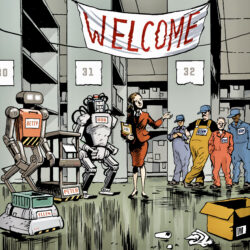Dutch food industry output falls for third year in a row

In 2024, the food industry in the Netherlands will face a production contraction for the third year in a row. This year that contraction is 1%, according to ING bank. This is slightly worse than the forecast from early this year, mainly due to the extremely wet spring. As a glimmer of hope, the provisional June figure shows growth again for the first time in 14 months.
In the first half of 2024, pressure on raw material supplies hindered a number of subsectors, ING reports. For instance, potato processing was down by 5% from January to June, and canners are struggling to obtain sufficient high-quality vegetables due to the exceptionally wet spring. Furthermore, milk supply in the dairy industry was more than 1.5% lower than a year earlier.
Within the meat processing industry, the picture is mixed; there has been an increase in the number of cattle and pigs slaughtered on the one hand, but a decrease in the number of broilers slaughtered on the other. In cocoa processing, production is holding up well for now, despite extreme price increases. In fact, in the first half of 2024, the Netherlands imported and processed more cocoa beans than a year earlier.
Run of price increases is coming to an end
The sustained run of price increases in the food industry has clearly come to an end, according to the bank. Compared to 18-24 months ago, far fewer producers indicate that they plan to raise prices. On the cost side, food producers are now enjoying lower market prices for agricultural raw materials and energy on the one hand, but face higher labour costs on the other.
As consumers have downsized their food spending in recent years, many companies have seen demand for higher-margin products fall and sales volumes decline. In addition, smaller food manufacturers in particular are struggling to fully pass on their increased costs to customers. Both developments do not help profitability.
Difficult to find staff
In a survey by Statistics Netherlands, over 60% of companies in the Dutch food and beverage industry also recently indicated that they experience obstacles in meeting their labour needs. For over a quarter of them, staff shortages are the main concern. Notably, financial constraints – such as a lack of liquidity or the higher cost of financing – are increasingly mentioned too.
Rise in labour costs stimulates robotization
Wage rises are also continuing in the food industry. Higher labour costs make automation and robotization more attractive, particularly in manufacturing and logistics, according to ING. Recent figures show that over 4,000 robots are now deployed in the Dutch food industry. Dutch food producers are thus among the European frontrunners in terms of robot deployment.










